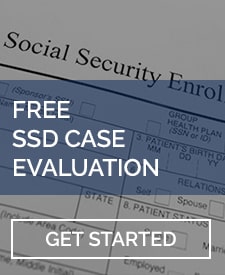Introduction
In the realm of health challenges, few conditions disrupt daily life as profoundly as carpal tunnel syndrome. If you’re grappling with this ailment and its associated symptoms, which may be hampering your ability to work, you might be wondering: is carpal tunnel a disability? There’s a glimmer of hope: Social Security disability benefits. This comprehensive guide goes beyond the surface, delving into the intricate layers of carpal tunnel syndrome, its ripple effects, and the avenues through which you can secure the support you rightfully deserve.
Understanding Carpal Tunnel Syndrome
Carpal tunnel syndrome isn’t just an isolated ailment; it’s a widespread concern affecting millions. The prevalence of this condition is staggering, with a considerable impact on daily life. This guide will navigate through the multifaceted aspects of carpal tunnel syndrome, equipping you with the knowledge to make informed decisions regarding your health and well-being.
The Scope of the Syndrome
While carpal tunnel syndrome has a formidable presence, its understanding is often veiled in mystery. This guide aims to dismantle the enigma surrounding the condition, offering clarity about its causes, effects, and potential routes to relief.
The Anatomy of Discomfort: Unveiling Carpal Tunnel Syndrome
Grasping the Fundamentals
Before delving into the depths of obtaining disability benefits, it’s crucial to comprehend the foundation of carpal tunnel syndrome. By understanding the intricate mechanisms and factors that contribute to the syndrome’s emergence, you can better advocate for your well-being.
Exploring the Origins
Carpal tunnel syndrome’s genesis lies in the complex interplay of physiological elements. Repetitive hand movements, often induced by occupation or lifestyle, culminate in nerve compression within the wrist. This compression, in turn, sets off a cascade of symptoms that impact daily activities, morphing ordinary tasks into daunting challenges.
The Diagnostic Odyssey: Navigating Carpal Tunnel Syndrome

Deciphering Symptoms
Carpal tunnel syndrome isn’t a monolithic entity; its symptoms can manifest in various shades and intensities. By recognizing the nuanced indicators, you empower yourself to seek timely intervention, potentially altering the course of the condition.
From Numbness to Strength: Charting Symptoms
Symptoms of carpal tunnel syndrome encompass a spectrum. From fleeting numbness and tingling to persistent weakness and an inability to hold objects, the syndrome’s manifestations are as diverse as they are disruptive. This guide elucidates the range of symptoms, enabling you to discern patterns in your experience and relay them effectively to medical professionals.
Pathways to Relief: Addressing Carpal Tunnel Syndrome
The Landscape of Treatment
Carpal tunnel syndrome isn’t a static sentence; it’s a narrative that can be shaped through strategic interventions. Understanding the diverse array of treatment options arms you with the tools to curate a personalized approach to mitigate the syndrome’s impact.
Exploring Treatment Modalities
The treatment landscape for carpal tunnel syndrome is vast and varied. From conservative measures such as wrist braces and ergonomic adjustments to surgical interventions that rectify nerve compression, this guide traverses the panorama of possibilities, fostering an informed perspective on your journey toward relief.
Navigating the Disability Terrain: Carpal Tunnel Syndrome and Social Security Benefits

The Nexus of Health and Finance
When carpal tunnel syndrome impinges upon your ability to work, seeking Social Security disability benefits becomes a pivotal endeavor. This section delves into the intricate dance between your health and your financial well-being, guiding you through the steps to secure the support you need.
Deciphering the Disability Criteria
The process of obtaining Social Security disability benefits hinges on deciphering complex criteria. This guide empowers you to navigate the system with confidence and clarity, with details on the listing of impairments and how SSA determines disability.
Elevating Your Chances: The Role of Legal Representation
Beyond the Surface
While pursuing disability benefits for carpal tunnel syndrome might seem straightforward, the journey is rife with complexities that could significantly impact the outcome. This section underscores the significance of enlisting the expertise of a seasoned Social Security Disability Attorney.
Conclusion: Advocating for Yourself
Carpal tunnel syndrome’s impact reaches beyond physical discomfort; it permeates into your ability to lead a fulfilling life. Navigating the intricate terrain of Social Security disability benefits requires both strategic insight and empathetic guidance. As you embark on this journey, armed with knowledge and accompanied by skilled legal representation, you pave the way for a future of relief and security. At LaBovick Law Group, we stand ready to champion your cause, ensuring your rights are upheld and your well-being is safeguarded. Remember, this pursuit won’t strain your finances, as our fees are contingent upon your triumph. Your path to well-deserved assistance starts here.




